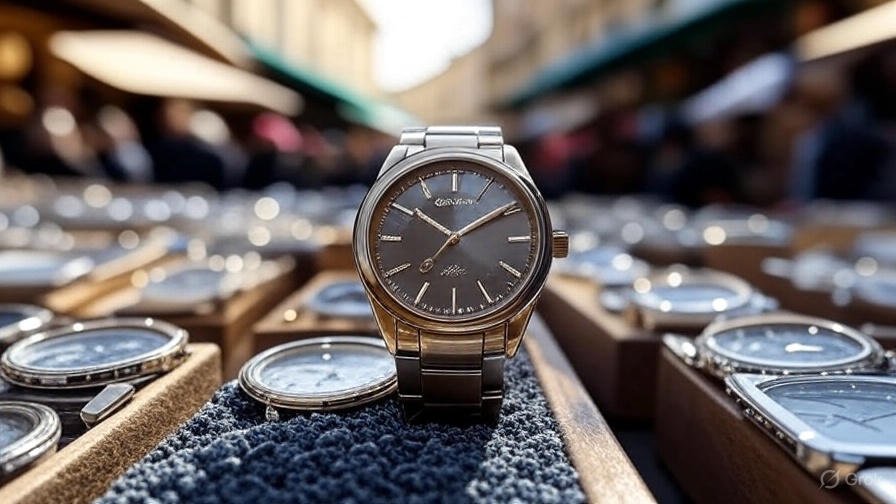The luxury watch and jewelry market has always been a target for counterfeiters, but recent developments have spotlighted the growing issue of Cartier replica. As demand for high-end timepieces and accessories continues to surge, so too does the production and distribution of imitation products. This article explores the evolving landscape of Cartier replicas, the challenges faced by the luxury brand, and the broader implications for consumers and the industry.
The Appeal of Cartier and Its Imitators
Cartier, a French luxury brand synonymous with elegance and craftsmanship, has long been a favorite among affluent consumers. Its iconic designs, such as the Tank watch and the Love bracelet, are symbols of status and sophistication. However, their high price points—often ranging from $5,000 to over $50,000—make them unattainable for many. This gap between aspiration and affordability has fueled a thriving market for Cartier replica, which mimic the brand’s aesthetic at a fraction of the cost.
Unlike low-quality knockoffs, today’s high-end replicas are crafted with remarkable precision, often using materials like stainless steel and synthetic sapphires to closely resemble authentic pieces. Some even replicate the intricate movements of Cartier’s mechanical watches, making it difficult for untrained eyes to spot the difference. This sophistication has made replicas more appealing to a broader audience, including those who might not typically consider counterfeit goods.
A Surge in Demand and Supply
The rise of e-commerce and social media has significantly boosted the replica market. Online marketplaces, often operating in regions with lax regulations, offer a vast selection of imitation Cartier products. These platforms make it easy for consumers to browse and purchase replicas, often with discreet shipping to avoid scrutiny. Social media influencers and targeted advertisements further amplify the visibility of these products, presenting them as affordable alternatives to luxury goods.
Recent data from industry analysts suggests that the global market for counterfeit luxury goods, including Cartier replicas, generates billions of dollars annually. A 2024 report by the International Trademark Association estimated that counterfeit goods account for nearly 3% of global trade, with luxury watches and jewelry being among the most replicated categories. The accessibility of these items online has only accelerated this trend, with some estimates indicating a 20% year-over-year increase in replica sales.
Cartier’s Response to the Replica Market
Cartier and its parent company, Richemont, have intensified efforts to combat counterfeiting. The brand employs a multi-pronged strategy, including legal action against manufacturers and distributors, collaboration with international law enforcement, and consumer education campaigns. In 2024, Richemont reported seizing over 10,000 counterfeit Cartier items in raids across Asia and Europe, a testament to the scale of the problem.
Technological advancements are also playing a role. Cartier has introduced authentication measures, such as serialized engravings and blockchain-based certificates of authenticity, to help consumers verify genuine products. These efforts aim to protect the brand’s reputation and ensure that customers receive the quality they expect from a luxury purchase.
However, the battle is far from straightforward. The decentralized nature of the replica market, coupled with the anonymity of online transactions, makes it challenging to shut down operations entirely. Moreover, some consumers knowingly purchase replicas, viewing them as a cost-effective way to enjoy luxury aesthetics without the hefty price tag.
Consumer Risks and Ethical Concerns
For consumers, purchasing a Cartier replica comes with significant risks. Beyond the obvious lack of investment value—counterfeit goods do not appreciate like authentic luxury items—there are concerns about quality and durability. Replicas often lack the precision engineering and high-grade materials of genuine Cartier products, leading to faster wear and tear. In some cases, consumers have reported allergic reactions to low-quality metals used in imitation jewelry.
Ethically, the replica market raises troubling questions. Counterfeiting is often linked to organized crime, with profits funding illicit activities. Additionally, the production of replicas can involve exploitative labor practices, including poor working conditions and low wages. Consumers who purchase replicas may unknowingly contribute to these issues, raising questions about the true cost of “affordable luxury.”
The Role of Consumer Awareness
Education is a critical tool in addressing the replica market. Cartier has launched campaigns to inform consumers about the risks of counterfeits and the value of authentic craftsmanship. These initiatives emphasize the heritage, innovation, and artistry behind each Cartier piece, encouraging buyers to invest in genuine products. Industry experts also recommend purchasing from authorized retailers or directly from Cartier to ensure authenticity.
Some consumers, however, argue that the luxury industry itself bears responsibility for the replica market’s growth. The exclusivity and high pricing of brands like Cartier can alienate aspirational buyers, pushing them toward more accessible alternatives. This tension highlights a broader challenge for luxury brands: balancing exclusivity with inclusivity in an increasingly democratized market.
The Future of Luxury and Counterfeiting
As technology continues to evolve, so too will the replica market. Advances in 3D printing and material science could make it even harder to distinguish between genuine and imitation products. At the same time, luxury brands are investing in cutting-edge solutions, such as AI-driven authentication tools and enhanced supply chain transparency, to stay ahead of counterfeiters.
For Cartier, the challenge is not only about protecting its brand but also about maintaining consumer trust. The rise of replicas underscores the need for luxury brands to innovate, both in their products and in their approach to combating counterfeiting. As the market for high-quality replicas grows, so does the importance of ensuring that consumers can make informed choices.
Conclusion
The Cartier replica market is a complex issue, driven by consumer demand, technological advancements, and the global reach of e-commerce. While replicas offer an affordable way to emulate luxury, they come with significant risks and ethical concerns. For Cartier, the fight against counterfeiting is an ongoing battle that requires a combination of legal action, technological innovation, and consumer engagement. As the luxury industry navigates these challenges, the choices made by both brands and consumers will shape the future of high-end goods. For now, the allure of Cartier—authentic or otherwise—remains as strong as ever.

